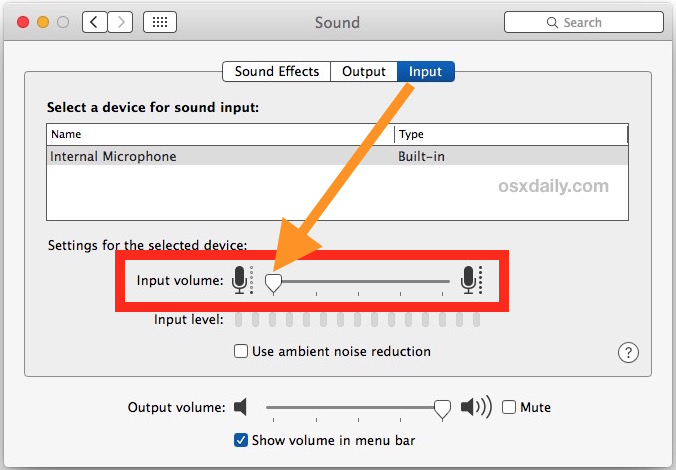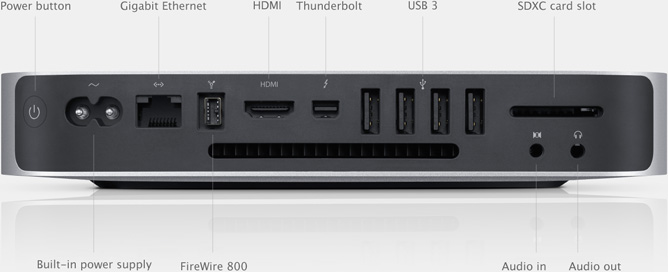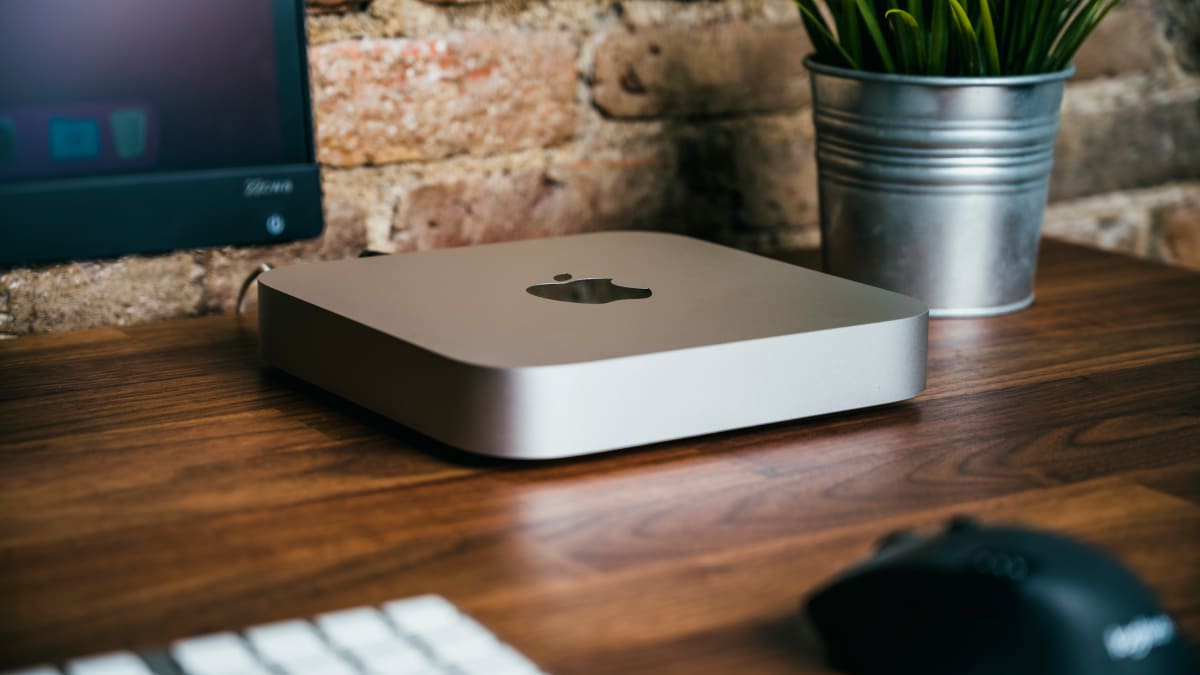Mac Mini Built In Mic
Your Mac mini comes with 90 days of complimentary technical support and a one-year limited warranty. Purchase AppleCare+ for Mac to extend your coverage to three years from your AppleCare+ purchase date and add up to two incidents of accidental damage coverage every 12 months, each subject to a service fee of $99 for external enclosure damage, or $299 for other repairable damage, plus.
The Apple computer user most likely to buy a 3rd party external webcam is the Apple Mac mini user, followed by a Mac Cylinder or Pro tower owner. These are the only two computer systems that Apple sells which don't include a webcam or even a built-in microphone for that matter. As such, a quality, external Mac compatible webcam with mic is a smart buying choice for those desktop Mac owners who want to kill two birds with one stone.Premium Mac mini Webcam From Logitech
Hi Frame Rates : Stereo Microphones
The Apple computer user most likely to buy a 3rd party external webcam is the Apple Mac mini user, followed by a Mac Cylinder or Pro tower owner. These are the only two computer systems that Apple sells which don't include a webcam or even a built-in microphone for that matter. Macs come with a built-in mic and you can connect an external mic to all Mac models. As with most audio devices, a mic will be plug & play. In fact, it will be easier to set up an external mic on a Mac that it is on a Windows 10 system where the right audio driver may have to be installed. Select a microphone. All available microphones and audio input devices will be listed in the menu near the top of the window. Click on the one you'd like to use. If your Mac is equipped with a built-in mic, it will be listed as 'Internal microphone'. If you don't see your external microphone on the menu, check it's connection.
The vast majority of web cameras sold these days already feature a built-in microphone, so finding a Mac mini webcam with one isn't hard. But a few don't such as the Microsoft Xbox Cam, The Cubie or iMage from eCamm, and a few others. Some of the higher end HD cameras for Mac include dual or stereo microphones on each side of the webcam's lens.
Im my testing, most no-name, cheap import webcams are just that; Cheaply constructed with less than optical quality webcam lenses and sensors, and equally sub-par microphones as well. Some of these cheap $10-30 cams had ok or so-so images and microphones that often sounded either muffled, harsh sounding, or hollow and thin. Some use a separate 1/8' analog cable for the microphone which often doesn't work at all on Mac's because of differences in Mic vs Line-Level input voltages. Any Apple compatible webcam with mic should use just a _single_ USB cable for both video and audio. All in all, these cheap import webcams are proof that you sorta get what you pay for when you seek out a dirt-cheap camera with built-in mic from the bargain bin. If your Mac mini webcam needs aren't demanding that might be 'good enough.'
On better quality HD webcams from companies like Logitech, Creative Labs, HP and Microsoft -- We're seeing dual noise canceling or stereo microphones built in to cameras for quality audio capture to match the razor-sharp High-Definition images these premium webcams deliver. Similar to what Apple is doing with directional 'Beam-Forming' mics in the recent Retina MacBooks, dual microphones can use differential voltage signals between the two mics to help with background noise and echo cancellation and give a clearer, cleaner video clip audio capture, or improve an Apple Messages, iChat, Skype or voice conferencing experience.

Mac Compatible Microsoft Pro Webcam
Autofocus + Optical Lens + Tripod Mount
A webcam with stereo microphones does add ambience and directionality - especially in multi-person chat. But because web cameras are small and the mics are placed rather close to each other on each side of the camera lens, the stereo separation is very subtle, not dramatic.
Apple is crazy, right? The Mac just had its best year of sales ever, and Cupertino is hitting the platform with a shock like it hasn’t had in nearly 15 years—back in a time when the Mac was not having such a good year. Apple is beginning the process of replacing industry-standard Intel chips with its own, custom-designed silicon.
In a way, we're not just reviewing the new Mac mini—a Mac mini is always a Mac mini, right? We're reviewing an ARM-based Mac for the first time. And this is not exactly the same story as all the other ARM machines we've looked at before, like Windows 10 on ARM—a respectable option with some serious tradeoffs.
Sure, longer battery life and quick waking from sleep are already out there on other ARM computers. But as you may have seen in our hands-on earlier this week, what we're encountering here is also a performance leap—and as you'll also see in this review, a remarkable success at making this new architecture compatible with a large library of what could now, suddenly, be called legacy Mac software.
Not everything is perfect; we'll talk about iOS apps on the Mac and some other problems, too. But if this Mac mini proves anything, it's that Apple was not, in fact, crazy. The M1 makes Apple's strategy seem soberingly sane.
Table of Contents
Specifications
Apple Mac Mini (2020) with Apple M1 Chip
Based on an ARM instruction set, it’s the first Apple-designed CPU and GPU for the Mac. For well over a decade, Apple’s laptops have had Intel CPUs and either Intel, Nvidia, or AMD graphics. The transition away from that status quo starts here. There’s much more to talk about on that front, of course—but let’s get the other specs out of the way first.
By default, the Mac mini ships with 8GB of RAM, but that can be upgraded to 16GB. That’s a lot less than the 64GB cap in the Intel Mac mini, but, for now, that Intel Mac mini still exists in Apple’s lineup.
Currently, Apple has only replaced its very bottom-end machines with Apple Silicon variants. It looks like we’re going to be waiting a while before we get beefier versions with more RAM and more ports (the M1 Mac mini and 13-inch MacBook Pro each only have two Thunderbolt ports, rather than four)—which is a very real bummer for a lot of people.
Likewise, solid-state storage starts at 256GB, but you can go to 512GB, or even 1TB or 2TB. Doubling the RAM adds $200 to the purchase price, while going to 2TB of storage from the base 256GB configuration more than doubles the cost of the device. That storage bump is the main reason our review unit's purchase price is so much higher than the base.
| Specs at a glance: 2020 Mac mini | |
|---|---|
| OS | macOS Big Sur 11.0.1 |
| CPU | Apple M1 |
| RAM | 16GB |
| GPU | Apple M1 |
| HDD | 2TB SSD |
| Networking | Wi-Fi 6; Bluetooth 5.0 |
| Ports | 2x Thunderbolt 3, 2x USB-A, 3.5mm headphone, HDMI, gigabit Ethernet |
| Warranty | 1 year, or 3 years with AppleCare+ |
| Price as reviewed | $1,699 |

The Mac mini has a built-in speaker—which might be a little surprising for a computer like this—but it does not have a built-in microphone. The speaker is bad, frankly; it sounds like an old MacBook Air speaker with the lid closed. There is a 3.5mm headphone jack, though. Other ports include two Thunderbolt 3/USB 4.0, two USB-A, Ethernet, and HDMI.
Advertisement
In terms of wireless, you get Wi-Fi 6 and Bluetooth 5.0.
The box doesn’t include much—just a power cord and the computer itself. You’ll obviously need to buy a display, a keyboard, a mouse, a microphone, and headphones separately. Again, the Apple adage that the cost balloons as you add essentials holds true here as ever.
As the name suggests, the Mac mini has a very low footprint. It measures 1.4×7.7×7.7 inches (3.6×19.7×19.7 centimeters) and weighs 2.6 pounds (1.2 kilograms).
It comes in two default configurations. The first starts at $699 and includes 8GB of RAM and 256GB of storage. The second ups the starting price to $899 and simply boosts the storage to 512GB.The base configuration here is $100 less than the previous Mac mini, which is nice to see. Again, Apple still sells an Intel-based Mac mini alongside this one, with a 6-core 3.0GHz Intel Core i5, Intel UHD 630 graphics, 8GB of RAM, and 512GB of solid-state storage. Nothing has changed for the Intel version of the device this year, though, so we won’t be going into that.
Design
If you liked how the last Mac mini looked, you’ll like this one, too: nothing has changed. For that reason, we won’t spend too much time on the aesthetics in this review. As before, the Mac mini prioritizes a very low profile. It’s essentially a laptop without a screen inside a 7.7×7.7-inch square.
It looks nice but unassuming. It has that classic Mac silver color, whereas its predecessor was gray. The ports are all on the back, so it should play nice with most cable management solutions.
A few frustrating limitations
Before we get into the good news—basically anything related to M1 performance and software support—let’s go over some really frustrating choices Apple has made regarding ports and peripherals.
Mac Mini 2012 Built In Microphone
As noted above, the RAM and storage configurations don’t reach as far as the Intel Mac mini’s do, and that also extends to ports. Two Thunderbolt ports is just okay, to be honest, even though there are also two USB-A ports on top of that. At least it's not the new M1 MacBook Air or 13-inch MacBook Pro, which are both limited to two Thunderbolt 3 ports total.
The Mac mini can only drive two displays at a time, and one of those has to be over HDMI. Since that HDMI port is HDMI 2.0, it doesn’t have the throughput to handle 4K at 120Hz, or 8K at 60Hz. There aren’t many monitors like that now, but there increasingly will be over the next few years. Generally, we like our machines to stand the test of time.
Neither the Mac mini nor any of its M1 brethren supports external GPUs. That’s pretty disappointing, and it calls into question Apple’s push for eGPUs over the past few years.
It wasn’t long ago at all that Apple was signaling that eGPUs were the future of Mac graphics performance. Now it’s not clear that they’ll be part of the Mac experience at all.
Additionally, some people have used the Mac mini as a file server. Many of them are probably going to want to stick with Intel for now, as the M1 Mac mini only has a gigabit Ethernet port, whereas the Intel Mac mini is configurable to have a 10Gb port.
 Advertisement
Advertisement Apple sees this initial volley of Apple Silicon devices as the bottom end of its lineup. So we’re in a very odd situation right now where if you want the cutting edge of performance, you have to choose low-end Mac configuration options. If you want lots of ports and RAM, you have to stick with Intel for now. That's very likely going to change with the introduction of more expensive Macs with a faster, hypothetical M1X chip or something like that—but we have no idea yet when that’s going to happen. We only know that, eventually, it will.
Apple M1
With that out of the way, it’s time for the good stuff.
As noted above, the Mac mini (and its new MacBook Air and 13-inch MacBook Pro siblings) has Apple’s M1 system-on-a-chip, which includes an 8-core GPU, a CPU with four performance and four efficiency cores, a 16-core neural processing unit (NPU) called the Neural Engine, and a whole bunch of other stuff.
Built on the ARM Instruction Set Architecture (ARM ISA), the M1 features 16 billion transistors and was manufactured in a 5nm process. According to Apple, each performance core in the M1 qualifies as the world’s fastest CPU core to date, while the efficiency cores match the performance of some recent Intel Macs.
We read each of the four performance cores as having a clock speed of 3.2GHz, and while the iPhone and iPad’s A14 chip has 8MB of L2 cache, the M1’s performance cores get 12MB. Unlike some previous chip designs, all the performance and efficiency cores can be utilized at once, though there are signs that it gets a little more complicated when it comes to the cache.
Apple claims that the M1 can achieve its strong performance in part because of its unified memory architecture (UMA), which allows the CPU and GPU to both easily access relevant data without having to slow things down by copying it around.
We’ll talk specific performance testing and results soon, but spoiler alert: the M1 is quite fast. That’s especially true for graphics compared to Intel’s graphics solutions (which seem unworthy to even be mentioned in the same category as what the M1 offers). These improvements are thanks to all of the above, plus techniques like tile-based deferred rendering and Apple’s proprietary Metal graphics API, which has been designed to take advantage of this architecture.
Mac Mini Built In Microphone
This has gotten less attention, but the M1 contains a bunch of other stuff besides the elephants-in-the-die that are the CPU, GPU, and NPU. It has the Secure Enclave, Apple’s encrypted tool for handling sensitive data on device. It has an image signal processor, which isn’t super relevant on the camera-less Mac mini, but it reportedly improves FaceTime camera quality on the laptops. The M1 also includes a storage controller and hardware for driving encryption, among other things.
In 2017, Apple introduced the T2 chip on the iMac Pro, and it went to most other Macs over the next couple of years. The T2 handled security features and various other things like some of what we just listed above, and we speculated when it was first introduced that it might be a predecessor to Apple’s eventual Mac SoC plans.It turns out we (and everyone else who picked up on that pretty obvious clue) were right. As such, the new M1 Macs don’t have T2 chips. It’s all on the M1 now.
:no_upscale()/cdn.vox-cdn.com/uploads/chorus_asset/file/22045881/cwelch_201114_4292_0006.0.jpg)
Of course, a change in architecture suggests all sorts of compatibility headaches with older software, to say the least. The M1 can’t natively run apps made for Intel-based Macs. But surprisingly, that ends up not really mattering in most cases. A lot of buyers of the M1 Macs will never even realize anything changed under the hood.
To explore that point, let’s go over the software the M1 does run.